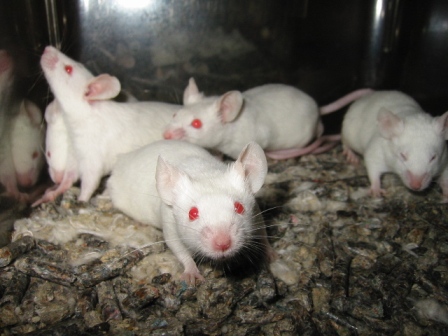The First Animal Rights Poem?
Picture this: It’s 1773 and the young poet Anna Barbauld is working as an assistant in the laboratory of vivisector Joseph Priestley. In order to study breathing, Priestley tormented live mice, and he did it without giving them any anesthetic (as vivisectors today still do in many cases).
One night, Priestley left his next victim—a mouse who would be put into a “breathing tank” (read: “suffocation tank”) that would be pumped empty of oxygen—in a cage on his desk. Anna was so moved by the sight of this doomed animal that she penned a poem from the mouse’s point of view, folded up the paper, and stuck it between the bars of the cage for Priestley to find in the morning. No one knows if it moved him at all.
For here forlorn and sad I sit,
Within the wiry grate;
And tremble at th’ approaching morn,
Which brings impending fate.
…
The well taught philosophic mind
To all compassion gives;
Cast’s round the world an equal eye,
And feels for all that lives.
The mouse’s plea for life and liberty is so touching that actor Anne Bobby actually broke down while reading the poem on the air for NPR. Luckily for the rhyming couplet–challenged, you don’t have to be Shakespeare to make a powerful case for animal rights. You can do it in a letter to the editor, a letter to your legislators, or even in 140 characters or less.


